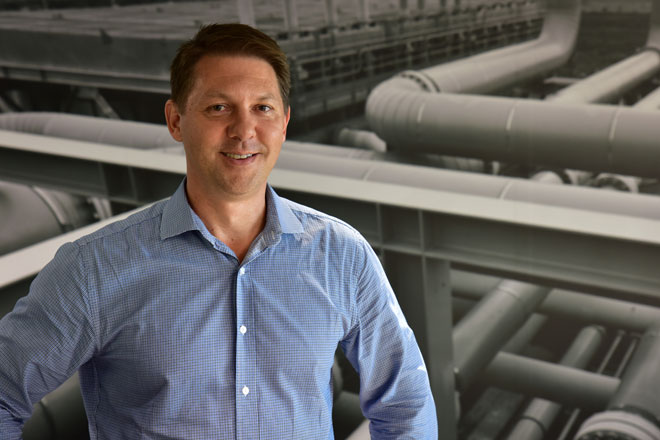Australia Pacific LNG
Testimonial: LNG industry milestone for Gladstone State Development Area
Five years after receiving project approval from the Coordinator-General, Australia Pacific LNG (APLNG) celebrated the first shipment of liquefied natural gas (LNG) leaving its facility in Gladstone on January 9, 2016. Origin's Group Manager Pipelines & Networks Operations, David Johnson shares with us his experience in working with the Office of the Coordinator-General throughout the project.

Located nine kilometres north-west of Gladstone, the APLNG plant on Curtis Island is one of three LNG plant and pipeline projects facilitated by the Coordinator-General within the Gladstone State Development Area (SDA) and the Callide Infrastructure Corridor SDA.
As a joint venture between Origin, ConocoPhillips and Sinopec, the APLNG project includes a processing plant and export facility and 750 kilometres of underground gas transmission pipelines from the Walloons Gasfields.
To help facilitate the LNG projects, the Coordinator-General extended and varied the Gladstone SDA to include land on Curtis Island, where the LNG plants are now located, and identified a multi-user infrastructure corridor to contain underground gas transmission pipelines through to the plant sites on Curtis Island. The Coordinator-General also declared the Callide Infrastructure Corridor SDA to provide for the transportation of coal seam gas (CSG) to the Gladstone SDA, via underground transmission pipelines.
David Johnson said the Office of the Coordinator-General's facilitation of the development provided a valuable benefit to the delivery of the project and ongoing operation of the assets.
“The coordinated approach by the Office of the Coordinator-General was paramount in achieving project milestones by ensuring APLNG, landholders and the general community were adequately consulted; desired outcomes were effectively negotiated; and Government, gas proponents, landholders and the community worked together to achieve a common goal,” David said.
The Coordinator-General's SDA team worked with APLNG, along with other gas proponents for the Gladstone LNG Project and the Queensland Curtis LNG Project to coordinate the assessments and access to land for the three projects, while reducing impacts on the community and environment within the Gladstone SDA and the Callide Infrastructure Corridor.
David said the SDA licences in the common corridor provided structure and process, allowing the three gas proponents to achieve a coordinated approach rather than trying to negotiate individual outcomes with common landholders.
“Without the coordination and development of a common corridor facilitated by the Coordinator-General's team, it would have been left to gas proponents to individually negotiate easements with respective landholders. This would have caused considerable and unnecessary stress on individual landholders.
“The certainty of access for construction within the SDA also meant that construction methods, materials and design could be managed more effectively in a common corridor, with less impact on landholders.
“The regular meetings, as required under the corridor licences, between gas proponents and the SDA team coordinators, provided a forum for gas proponents to discuss any issues or concerns they may have had whereby each could learn from and ensure that design and construction efficiencies from a coordinated approach between proponents could be identified. This was vital to the successful construction of all three transmission pipelines in a timely manner.”
David said his experience with the APLNG project demonstrated that the Gladstone SDA and Callide Infrastructure Corridor offered definite economic and social benefits to business, industry and the community.
“Hubs such as Gladstone were able to take advantage of the increased employment and procurement opportunities. Local businesses such as hotels, restaurants, supermarkets, transport and construction saw benefits from increased trade and in turn were able to create additional employment opportunities.
“By recognising the emerging CSG-LNG export industry and supporting a dedicated LNG precinct on Curtis Island, Queensland is building a world class LNG industry for Australia.”
Last updated: 11 Dec 2023
